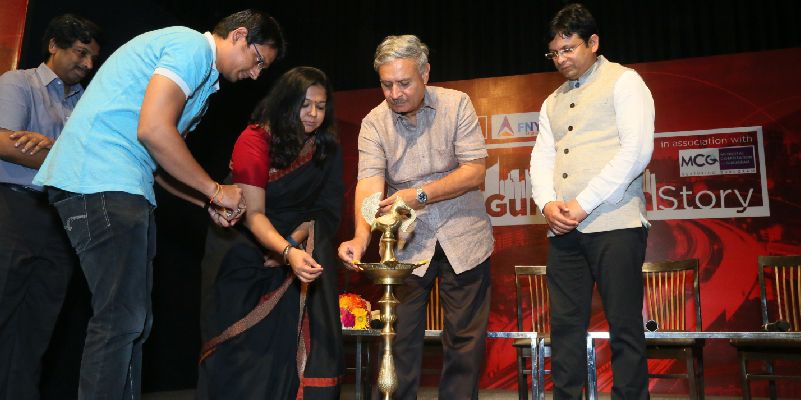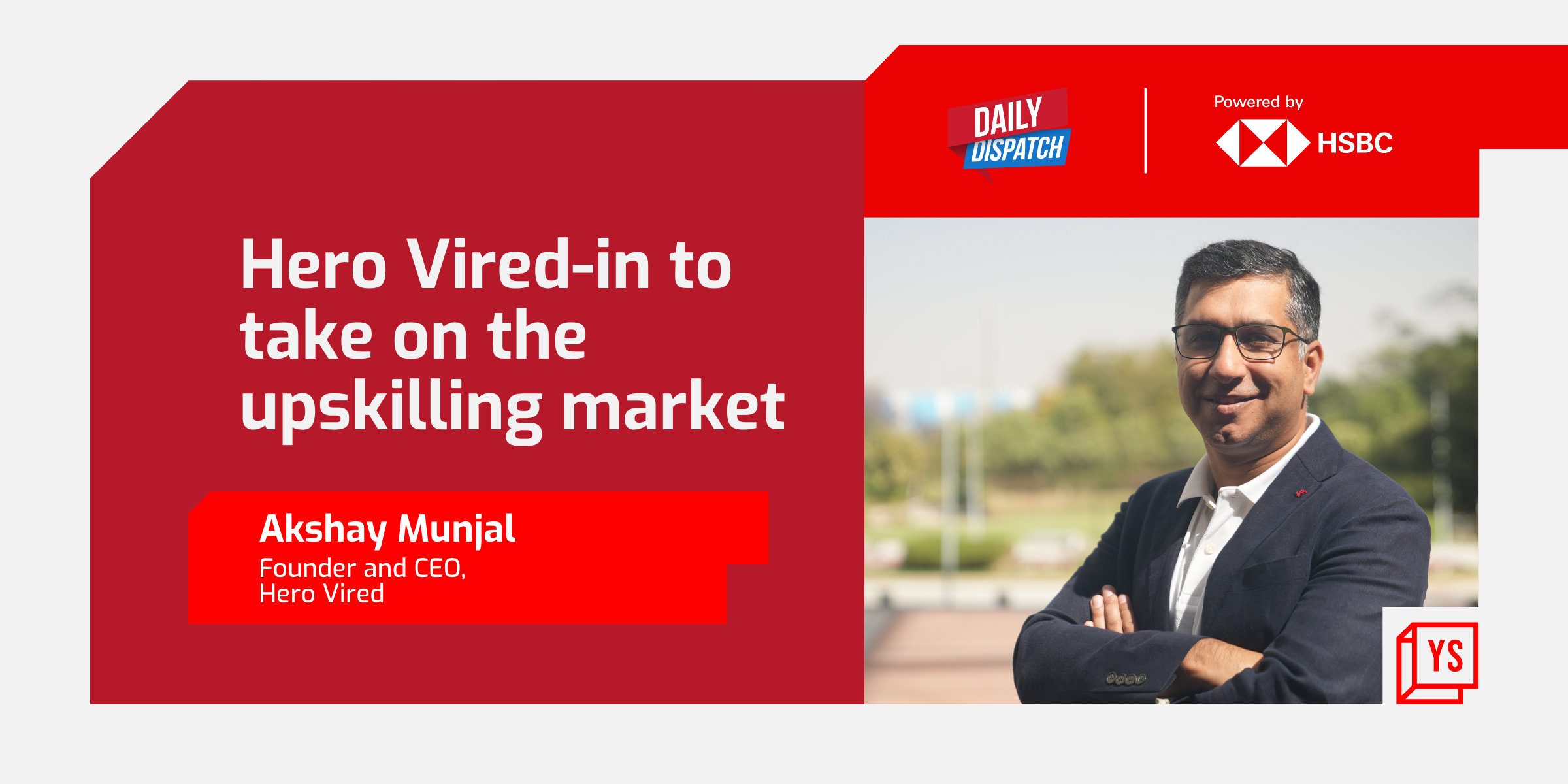At TheGurugramStory, spotlight is on sustainable mobility and green homes
Rapid urbanisation may have transformed Gurugram into a financial and industrial hub, but the city seems to be unravelling at the seams. Tackling the many urban challenges, including last-mile connectivity and infrastructural problems, is vital to convert Gurugram into Millennium City.
In the last two decades, the city with the third-highest per capita income in India has exploded with growth. Gurugram, formerly Gurgaon, has taken huge strides in the fields of innovation, technology, design and other progressive areas, but the growth story has been accompanied by problems aplenty.
In a joint initiative, YourStory Media and FNY Digital, along with Municipal Corporation of Gurugram (MCG), launched TheGurgramStory, a platform for influencers and leaders to come together and determine the direction Gurugram should take in order to be reinvented as India’s Millennium City.

The debates and discussions, organised on Saturday, put the spotlight on the many urban challenges that Gurugram faces — infrastructural issues, unmanageable traffic, poor air quality, environmental problems and lack of a sustainable vision.
Need of the hour: Sustainable mobility
According to a Centre for Science and Environment (CSE) analysis, the density of cars in Gurugram is far higher than in Delhi. In 2014, Gurugram had 323 cars per 1,000 people compared with 88 cars per 1,000 people in Delhi. The city, which has grown vertically, has more people per sq km than Delhi does. And to top that, over 1.3 lakh cars and SUVs from Delhi come to Gurugram every day, clearly indicating the reason for Gurugram’s clogged roads.
According to Gurugram’s mobility plans, only 20 percent of footpaths are usable; the city does not have dedicated cycle tracks. It lacks a public transport system and the MCG is yet to launch a city bus service. With limited sustainable transport options and increased private motorisation, Gurugram’s traffic is taking a toll on commuters.
With a team of 350 personnel, Gurugram traffic police oversees and controls traffic in the entire district. However, going ahead, the Haryana government plans to recruit 1,000 new officers to gain better control over the city’s traffic.
Recalling one of the worst traffic jams last year as “Gurujam”, Simardeep Singh, DCP, Traffic, Gurugram, highlighted that the city’s infrastructure development has not taken place as planned.

“If we look at the infrastructure we have in Delhi and compare it with Gurugram, you will understand how difficult it is for a single traffic constable standing at IFFCO Chowk to manage traffic,” Simardeep said.
Change in mindset is critical
Experts feel there is a need for change in the mindset of commuters, organisations and the government for sustainable urban transport to take over Gurugram roads.
Nitin Seth, a Nasscom member, said: “I think we still are not attacking the right problem. Unless there is a paradigm shift in the mindset and in the planning objectives, it’s a lost case.”
With the aim of resolving last-mile connectivity problems in Gurugram, aggregated cabs major Uber launched its bike-sharing service, UberMOTO.
Shweta Rajpal Kohli, Head, Public Policy, Uber India & South Asia, highlighted that one in every four UberMOTO trips originates at the metro station, indicating that people lack last-mile connectivity.
“The minute we provide them that, they are encouraged to use the metro,” she said.
In order to streamline Gurugram’s mobility, there is need for private players to step up and help the government. Players like Ola and Uber are already bringing in a paradigm shift in integrated transport with the sharing economy. However, private entrepreneurs and citizen’s groups can also play a significant role in revamping Gurugram’s sustainable urban transportation. In the past, Gurugram has hosted biking-focused initiatives, including Raahgiri and car-free day.
Adopting sustainable living methods
Besides traffic, the other topic discussed was how to ensure better sustainable living conditions and make Gurugram an eco-friendly city. From waste management to building green homes and adopting renewable energy sources, citizens, experts and government voices discussed environmental lessons for Gurugram.
The government has proposed a policy for solar rooftop systems to reduce dependency on digi-sets and consume less power.
However, Vinay Pratap Singh, District Collector, Gurugram, highlighted that there were many challenges with the implementation, including multiple stakeholders and access to finance, among others.
When it comes to making Gurugram greener, residents want to start the initiative from their homes.
Prasanto K Roy, Vice President and Head, Nasscom Internet, is a greentech evangelist and owns India’s first certified green home in Delhi. He said building a green home in Millennium City would be very difficult, owing to the concept of condominiums and lack of metered water and electricity facilities.
But Gurugram residents are slowly becoming ambassadors of efficient waste management, making sure that proper segregation of waste is done in residential societies. The harbingers of cleanliness are also keen on passing useful waste management tips to other societies to make Gurugram a Swacch city.
Rao Inderjit Singh, Minister of State (MoS) for Planning and Urban Development, and Member of Parliament (MP) from Gurugram, was the chief guest at the event.
He said: “Unfortunately today some of the problems that Gurgaon faces is probably because decisions about Gurgaon were not taken here but in Chandigarh. Even though we contribute 65-70 percent of revenue that Haryana gains still Gurgaon lacks basic amenities market can provide as a price has not been bridged in the city. Our focus both on the part of GMDA (Gurugram Municipal Development Authority) and MCG is to bridge this gap in a way that we deliver affordable but quality services like infrastructure, housing, policing. These are issues that are now being addressed slowly but surely and I have good team of officers with me now.”
Also present at the event was MCG (Municipal Corporation of Gurugram) Commissioner V Umashankar, who blamed Gurugram’s inability to keep pace with growth for its infrastructure deficiency, highlighting lack of affordable transportation and healthcare as some of the key factors hindering Gurugram’s sustainable development.
“We do not have affordable education system. There are excellent schools out here but they come at a cost. The market gap that has existed as far as what we need to take to the common citizen viz a viz what the market can provide as a price has not been bridged in the city. Our focus both on the part of GMDA (Gurugram Municipal Development Authority) and MCG is to bridge this gap in a way that we deliver affordable but quality services,” he added.











![[Weekly funding roundup] Marquee VCs lead investments into Indian startups; raise $157M](https://images.yourstory.com/cs/2/f08163002d6c11e9aa979329348d4c3e/Weeklyimage-1577460362436.png)